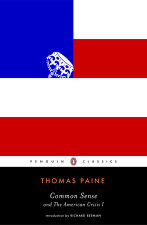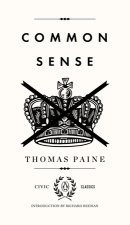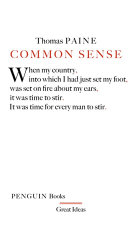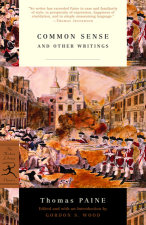Common Sense

“In Common Sense a writer found his moment to change the world,” Alan Taylor writes in his introduction. When Paine’s attack on the British mixed constitution of kings, lords, and commons was published in January 1776, fighting had already erupted between British troops and American Patriots, but many Patriots still balked at seeking independence. “By discrediting the sovereign king,” Taylor argues, “Paine made independence thinkable—as he relocated sovereignty from a royal family to the collective people of a republic.” Paine’s American readers could conclude that they stood at “the center of a new and coming world of utopian potential.” The John Harvard Library edition follows the text of the expanded edition printed by the shop of Benjamin Towne for W.…
$42.00
October 15, 2010Thomas Paine was born in Thetford, England, in 1737, the son of a staymaker. He had little schooling and worked at a number of jobs, including tax collector, a position he lost for agitating for an increase in excisemen’s pay. Persuaded by Benjamin Franklin, he emigrated to America in 1774. In 1776 he began his American Crisis series of thirteen pamphlets, and also published the incalculably influential Common Sense, which established Paine not only as a truly revolutionary thinker, but as the American Revolution’s fiercest political theorist. In 1787 Paine returned to Europe, where he became involved in revolutionary politics. In England his books were burned by the public hangman. Escaping to France, Paine took part in drafting the French…























